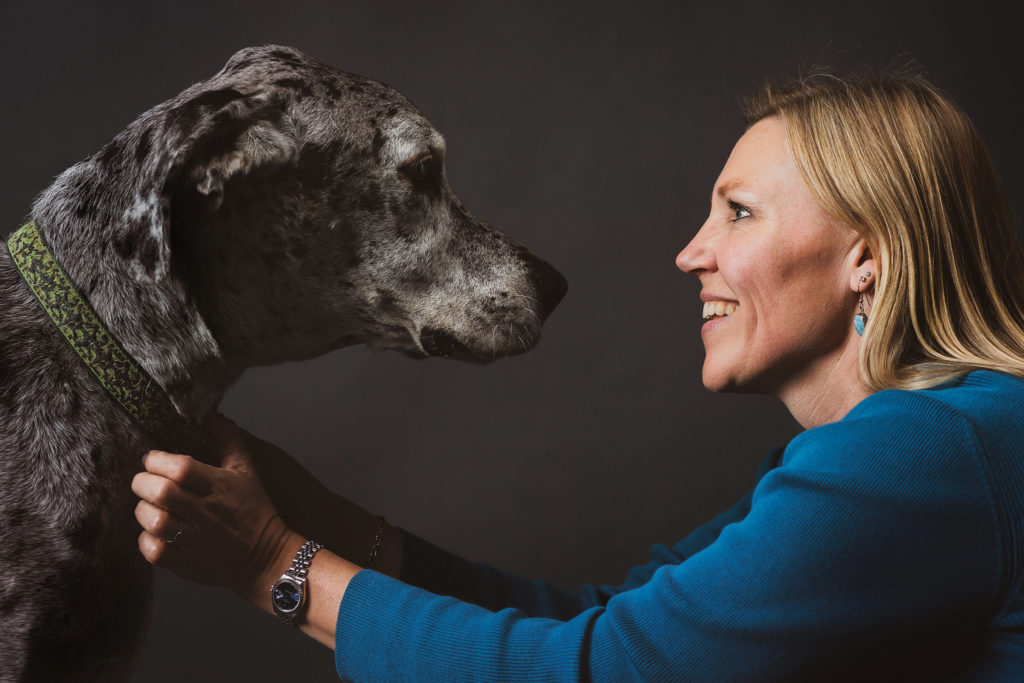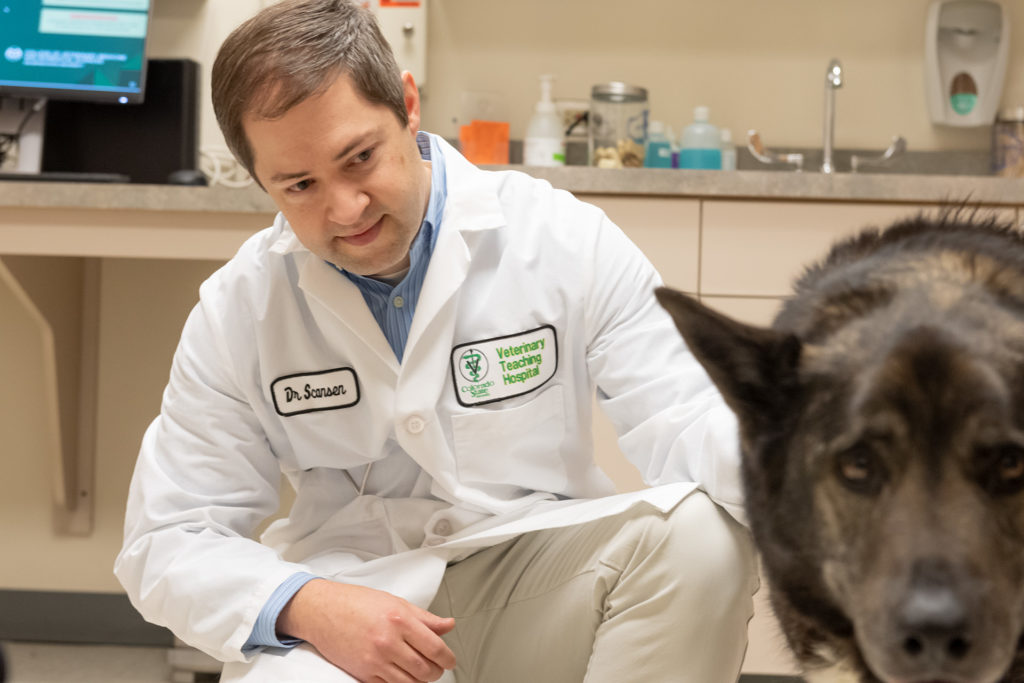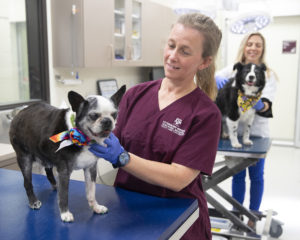
Do you have a dog? Want to help scientists understand what happens as dogs and humans get older?
The Colorado State University College of Veterinary Medicine and Biomedical Sciences is seeking canine participants for the Dog Aging Project (DAP), a five-year, $23 million undertaking to better understand canine aging.
CSU is one of seven colleges of veterinary medicine around the country to participate in this study, along with Texas A&M, University of Georgia, Iowa State University, Washington State University, Oregon State University and North Carolina State University. The study is funded by the National Institute on Aging, a part of the National Institutes of Health. To participate, owners nominate a dog (one per household) at DogAgingProject.org.
“Aging is a complex phenomenon. By combining insights from many areas of veterinary research, the Dog Aging Project aims to develop the field of veterinary geroscience and ultimately develop interventions that will help dogs live longer, healthier lives,” said Dr. Matt Kaeberlein, DAP co-director, University of Washington.
Studies look at life-long health

As the largest research data-gathering program of its kind, the DAP offers numerous opportunities to glean important information on canine lifespan, but also canine healthspan, which refers to the period of life spent free from disease.
Because the nature of the project is collaborative, all data collected by the DAP are available to researchers worldwide through Terra, a cloud-based computing platform, located at the Broad Institute of MIT and Harvard.
The DAP research team includes more than 40 experts from a variety of fields and institutions, who use the information submitted by the DAP participants and stored in Terra to investigate many aspects of canine health and longevity. The Dog Aging Project includes research in the following areas:
- Genetics
- Microbiology
- Toxicology
- Canine cognition
- Age-related mobility
- Cardiology
- A clinical drug trial of rapamycin
CSU is collaborating on the TRIAD clinical trial to study whether the immunosuppressant rapamycin increases the lifespan of companion dogs. A secondary purpose is to determine whether rapamycin improves various measures of health in aging dogs. Rapamycin has been shown to increase the lifespan and delay or reverse many age-related disorders in mice.

More dogs needed
Since the project launch last year, nearly 30,000 dog owners have volunteered for this community science research project dedicated to understanding the biological and environmental determinants of canine aging.
Now, more than a year later, the Dog Aging Project is looking for additional canine participants for this research. All kinds of dogs are welcome to join, but DAP researchers are specifically seeking dogs, both purebred and mixed breed, in the following categories:
Breeds
- Large breed dogs weighing between 70-100 lb, especially breeds other than Labradors, golden retrievers and German shepherds (the most common breeds in the US)
- Giant breed dogs weighing more than 100 lbs, such as great Danes, wolfhounds, mastiffs
- Hound dogs, spaniels, pointers, terriers, bulldogs, and pit bulls (purebred and mixed breed)
- Working dogs, such as herding, K9, service, agility, mushing dogs, etc.
Geographical regions
- Dogs living in rural areas, small towns and large cities, in particular
- Dogs living in the region of the CSU Veterinary Teaching Hospital
“Healthy aging is the result of both genetics and the environment,” said Dr. Daniel Promislow, DAP principal investigator and co-director, University of Washington. “It’s really important for us to study dogs who live in all kinds of environments from farm dogs to city dogs.”

Puppies too!
Because the DAP is a long-term study, puppy participants are especially beneficial to the project. The research team wants to follow dogs through their entire lives.
“Better understanding the health effects of the presence and timing of spaying and neutering your dogs is of particular interest to the veterinary community,” said Dr. Kate Creevy, DAP chief veterinary officer, College of Veterinary Medicine and Biomedical Science, Texas A&M University “Following puppies through the process of spaying or neutering or through reproductive activity will tell us a lot about how these events influence healthy aging.”
Joining the pack

To participate in the Dog Aging Project, owners nominate a dog (one per household) at the project website, DogAgingProject.org. After this, they are invited to set up a personal research portal where they answer scientific surveys about their dog and upload veterinary records.
As a member of the Dog Aging Project Pack, participants will be asked to complete an annual health survey about their dog, which will take 2-3 hours, and several other shorter surveys (estimated 10-30 minutes each) spread throughout the year.
Once a dog is a member of the Dog Aging Project Pack, they may be eligible for a variety of other research activities (all voluntary), which could include genetic analyses, the collection of biological samples, or even participation in a clinical trial.
“By summer 2021, we’re hoping to have 60,000 Pack members eligible for additional studies. These animals bring so much to our lives. Our entire team is dedicated to extending quality of life into advanced age for dogs and their humans,” said Creevy.
The Dog Aging Project is supported by the National Institutes of Health’s National Institute on Aging, grant 5U19AG057377-03.
For more information, or to nominate your dog, visit dogagingproject.org.
Notes for media
Media kit: Fact sheets, photos and b-roll
Pet owners in Colorado whose dogs are participating in the Dog Aging Project and are willing to speak to the media have been identified.
Media contacts:
Texas A&M (for interviews with Dr. Kate Creevy, DAP Chief Veterinary Officer,): Jennifer Gauntt, 979-862-4216, jgauntt@cvm.tamu.edu
UW (for interviews with DAP co-directors Dr. Daniel Promislow and Dr. Matt Kaeberlein): Leila Gray, 206-475-9809, leilag@uw.edu